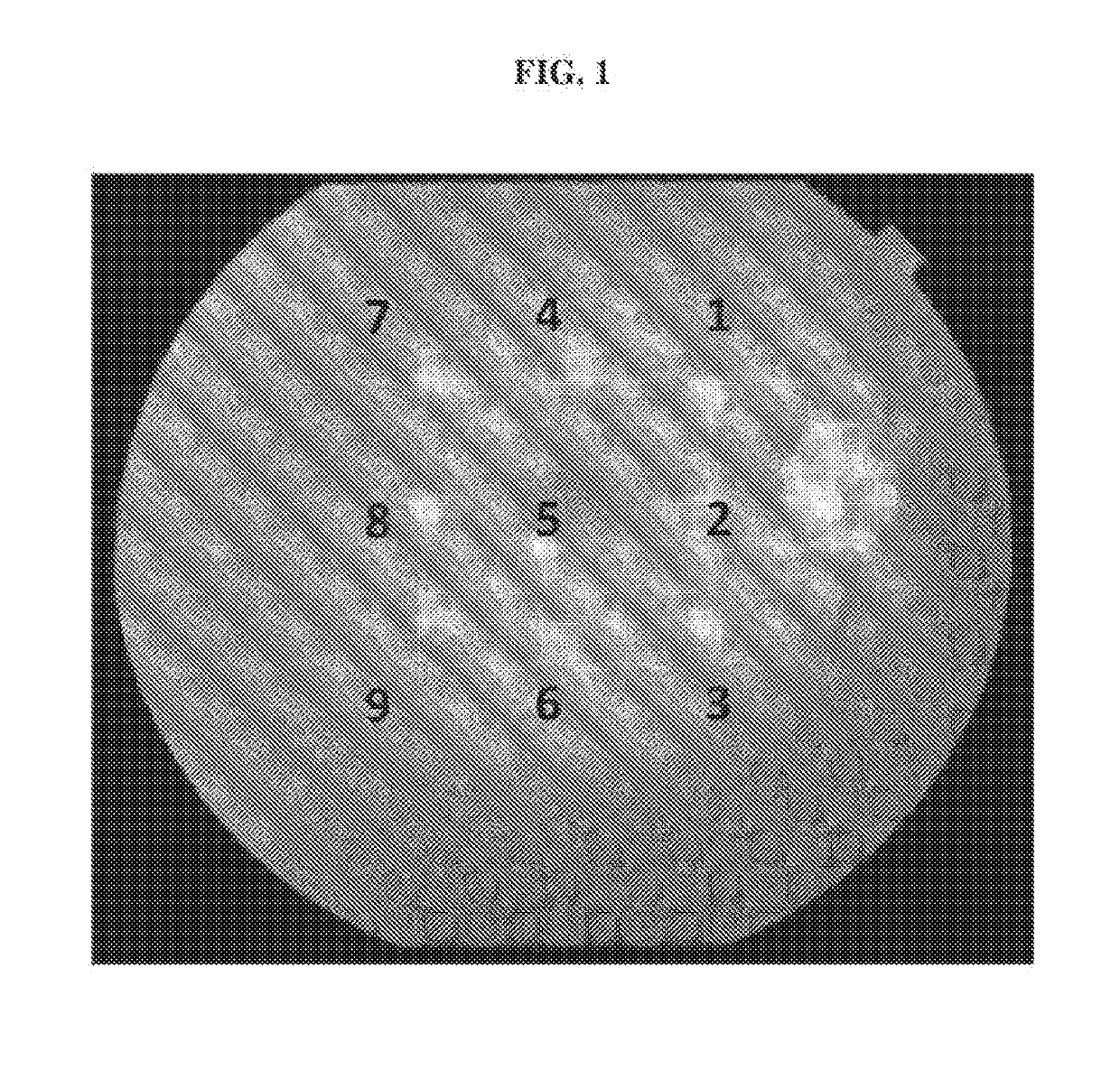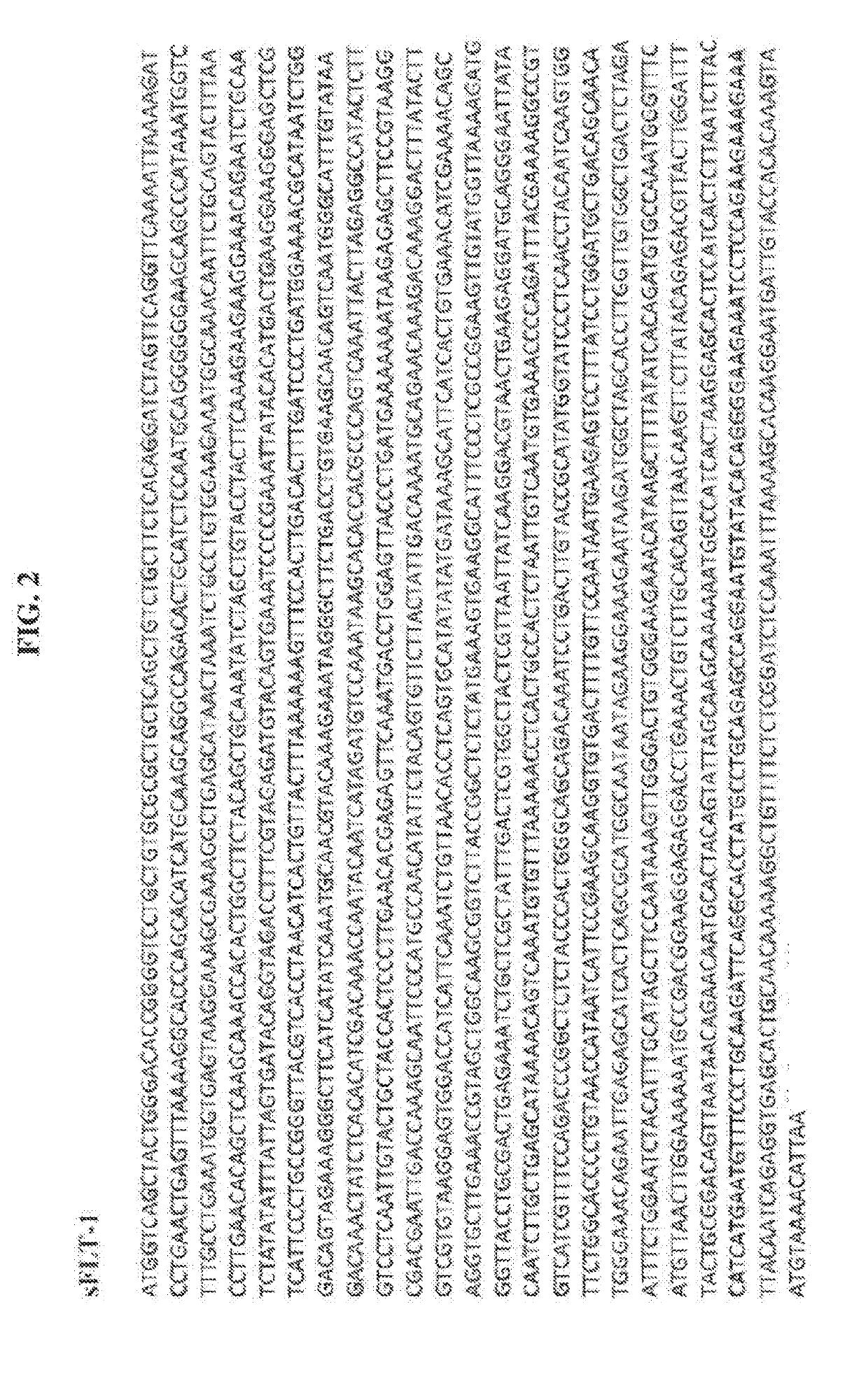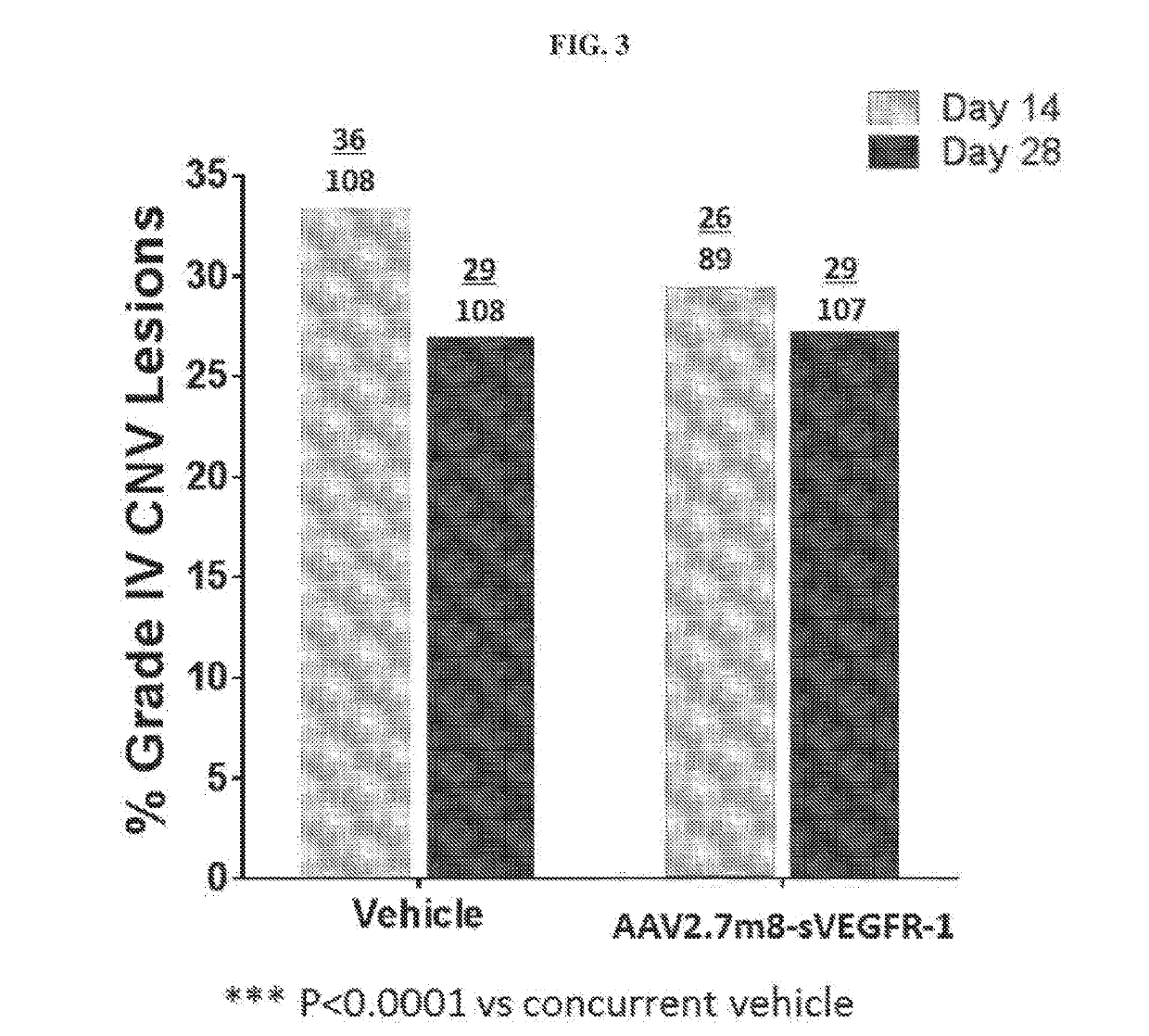Compositions and methods for reducing ocular neovascularization
a technology of ocular neovascularization and compositions, applied in the direction of immunoglobulins, peptides, drug compositions against animals/humans, etc., can solve the problems of vision loss and deterioration of eye disease or condition, and achieve the effects of reducing the risk of inflammation, prolonging or sustained release of therapeutic agents, and improving the risk of inflammation
- Summary
- Abstract
- Description
- Claims
- Application Information
AI Technical Summary
Benefits of technology
Problems solved by technology
Method used
Image
Examples
example 1
Evaluation of 7m8-sVEGFR-1 in Monkeys
[0204]Objective: To assess the efficacy of 7m8-sFLT-1 following intravitreal (IVT) administration at 2×1012 vg to inhibit the development of choroidal neovascularization (CNV) induced by laser photocoagulation in African green monkeys. An additional objective can be to evaluate regional sFLT-1 expression in ocular tissues.
[0205]CNV lesion model in monkeys is a generally accepted as and a widely used standard primate model for assessing potential efficacy of therapies for treating eye diseases associated with neovascularization, such as wet AMD.
[0206]Subject Recruitment: Monkeys underwent baseline screening to assess ocular and general health by tonometry, slit lamp biomicroscopy, fundoscopy, color fundus photography (CFP), fluorescence angiography (FA) and optical coherence tomography (OCT). Thirty-nine animals with normal findings were enrolled in the study and randomized into four treatment groups by baseline body weight and gender (Table 1). A...
example 2
Evaluation of 7m8-ranibizumab in Monkeys
[0215]Similar in vivo studies as described in Example 1 were performed in monkeys using the same protocol and AAV2.7m8-ranibizumab, which is rAAV2 comprising the 7m8 sequence inserted between positions 587 and 588 of capsid protein VP1 of AAV2 and a nucleic acid sequence that encodes ranibizumab.
[0216]As illustrated in FIG. 4, AAV2.7m8-ranibizumab administered intravitreally prevented the occurrence of laser-induced grade IV CNV lesions. AAV2.7m8-ranibizumab, ranibizumab alone (positive control), or vehicle control comprising formulation buffer were administered to eyes of non-human primates via intravitreal injection at a dose of 2×1012 vg. CNV lesions were then induced by laser irradiation in all groups, and color fundus photography was used to grade each lesion on a scale of I-IV. Measurements of percentage of grade IV lesions were then averaged and plotted. AAV2.7m8-ranibizumab significantly reduced CNV lesions in vivo to levels comparable...
PUM
| Property | Measurement | Unit |
|---|---|---|
| volume | aaaaa | aaaaa |
| volume | aaaaa | aaaaa |
| volume | aaaaa | aaaaa |
Abstract
Description
Claims
Application Information
 Login to View More
Login to View More - R&D
- Intellectual Property
- Life Sciences
- Materials
- Tech Scout
- Unparalleled Data Quality
- Higher Quality Content
- 60% Fewer Hallucinations
Browse by: Latest US Patents, China's latest patents, Technical Efficacy Thesaurus, Application Domain, Technology Topic, Popular Technical Reports.
© 2025 PatSnap. All rights reserved.Legal|Privacy policy|Modern Slavery Act Transparency Statement|Sitemap|About US| Contact US: help@patsnap.com



